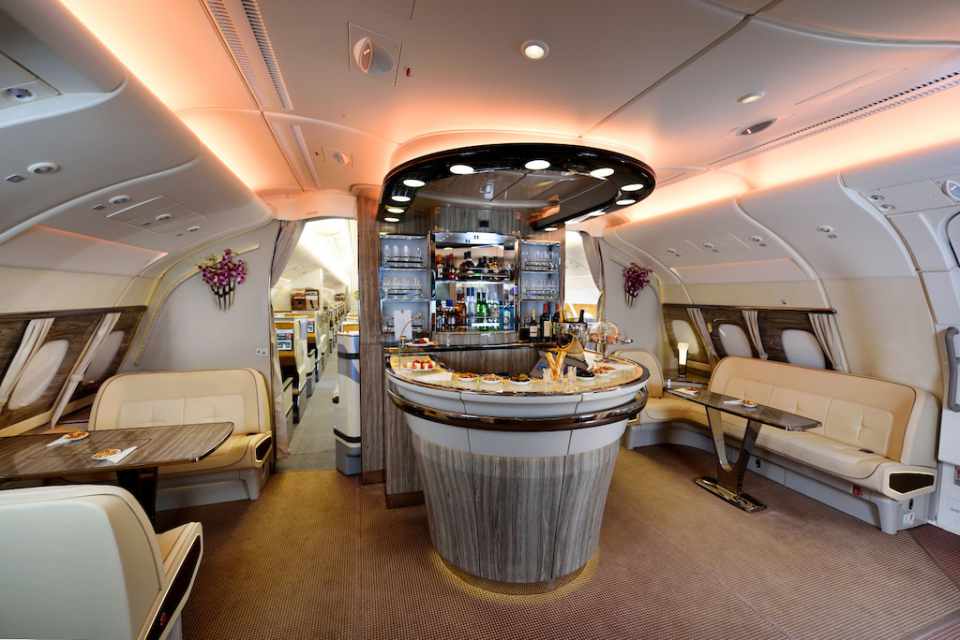Aerospace
Emirates is unhappy after abruptly cancelling a flight at LHR airport.

constantly and collectively to protect our flight operations and ensure minimal customer disturbance, especially during high travel months
It is consequently deeply sad that LHR offered us 36 hours to comply with capacity cuts last evening, a figure that appears to have been snatched from thin air. Their letters not only specified which planes we should reject paying customers, but also threatened legal action if we did not comply.
These requests are completely ridiculous and unacceptable, and we reject them.
Our ground handling and catering operations at London Heathrow Airport (LHR) are managed by dnata. Emirates Group – are well prepared and competent of handling our flights. As a result, the crux of the problem is with the airport operator’s central services and systems.
Emirates is an important and consistent operator at LHR, having reintroduced six daily A380 flights beginning in October 2021. Our operating requirements cannot be a surprise to the airport after 10 months of consistently high seat loads.
They now want to force Emirates to reject tickets to tens of thousands of passengers who have paid for and booked months in advance their long-awaited package holidays or flights to see their loved ones. And this at the peak season with the forthcoming UK holidays, when many people are keen to travel following two years of pandemic restrictions.
Emirates is committed to doing the right thing for our customers. However, with all flights running full for the next few weeks, including at other London airports and on other airlines, re-booking the large number of possibly impacted passengers is unfeasible. To complicate matters further, 70% of our LHR customers are travelling beyond Dubai to see loved ones in far-flung destinations, and it will be tough to locate them new onward connections at short notice.
It is also unrealistic to move some of our passenger operations to other UK airports at such short notice. It is not as straightforward as locating a parking spot at a mall to ensure ground readiness for a widebody long-haul aircraft with 500 passengers on board.
The final truth is that the LHR management team is unconcerned about travellers and airline customers. All of the signs pointed to a robust travel comeback, and Emirates has been loud about it for months. We planned ahead of time to be ready to service customers and meet travel demand, including rehiring and training 1,000 A380 pilots in the previous year.
LHR decided not to act, plan, or invest. Faced with a “airmageddon” situation as a result of government incompetence and inaction, they are shifting the entire weight – of costs and the hurry to sort out the issue – to airlines and passengers.
The decisions of the London Heathrow management team should be scrutinised by the airport’s shareholders.
Given the enormous value that the aviation community generates for the UK economy and communities, we applaud the action taken by the UK Department for Transport and Civil Aviation Authority to request information from LHR on their response plans, system resilience, and the seemingly arbitrary cap of 100,000 daily passengers. Given that LHR handled 80.9 million passengers in 2019, or a daily average of 219,000, the cap represents a more than 50% reduction at a time when LHR claims to have 70% of ground handling resources in place.
Emirates intends to continue operating to and from LHR as usual till further notice.

Aerospace
Boeing Transfers Rocket Stage to NASA, Paving Way for Human Moon Mission

Boeing has achieved a significant milestone by providing NASA with the second core stage of the Space Launch System (SLS) rocket.
This crucial component, crafted at NASA’s Michoud Assembly Facility (MAF), is set to propel the Artemis II crew into lunar orbit, marking humanity’s return to deep space after a 50-year hiatus.
The monumental Boeing-built rocket stage, the largest element of the Artemis II mission, will embark on a journey aboard the Pegasus barge, traveling 900 miles to NASA’s Kennedy Space Center.
Comparison of two legendary aircraft B777x vs B747 aircraft:Click here
Upon arrival, it will be meticulously integrated with other essential Artemis II components, including the upper stage, solid rocket boosters, and NASA’s Orion spacecraft within the iconic Vehicle Assembly Building. This intricate integration process is a vital step toward the eagerly anticipated Artemis II launch, slated for 2025.
“Boeing-built products helped land humankind on the moon in 1969, and we’re proud to continue that legacy through the Artemis generation,” remarked Dave Dutcher, vice president and program manager for Boeing’s SLS program. “Together, with NASA and our industry partners and suppliers, we are building the world’s most capable rocket and paving the way to deep space through America’s rocket factory in New Orleans.”
NASA, Lockheed Martin Reveal X-59 Quiet Supersonic Aircraft:Click here
The delivery of Core Stage 2 marks a significant achievement in the evolution of the SLS rocket. Towering over 200 feet and powered by four RS-25 engines, this core stage, coupled with two solid-fueled booster rockets, will generate a staggering 8.8 million pounds of thrust. This immense power is crucial to launching Artemis II and future missions into the vast expanse of space.
The SLS rocket stands unparalleled in its capability to transport both crew and substantial cargo to the moon and beyond in a single launch. Its extraordinary capacity will facilitate the delivery of human-rated spacecraft, habitats, and scientific missions to destinations including the moon and Mars, ushering in a new era of space exploration.
-

 Travel1 week ago
Travel1 week agoAir India to Expand US Operations with Three New Routes After a Decade
-

 Travel2 weeks ago
Travel2 weeks agoWhy We Should Avoid These Stamps in a Passport
-

 Airlines1 month ago
Airlines1 month agoInvestigations Reveal Fake Chinese Titanium in Boeing and Airbus Jets
-

 Tech4 weeks ago
Tech4 weeks agoChina’s CATL Plans 1,800-Mile Electric Plane Launch by 2027
-

 Airport3 days ago
Airport3 days agoTop 10 Largest Airports in the World by Size
-

 Aerospace4 weeks ago
Aerospace4 weeks agoChina’s Fighter Jets Turn Wings into Autonomous Drones
-

 Airlines4 days ago
Airlines4 days agoAir India Rolls Out A350s for Delhi-New York JFK and Newark Routes
-

 Defence3 weeks ago
Defence3 weeks agoBoeing Enhances Chinook with New Engines and Block II Upgrades at $96 Million









